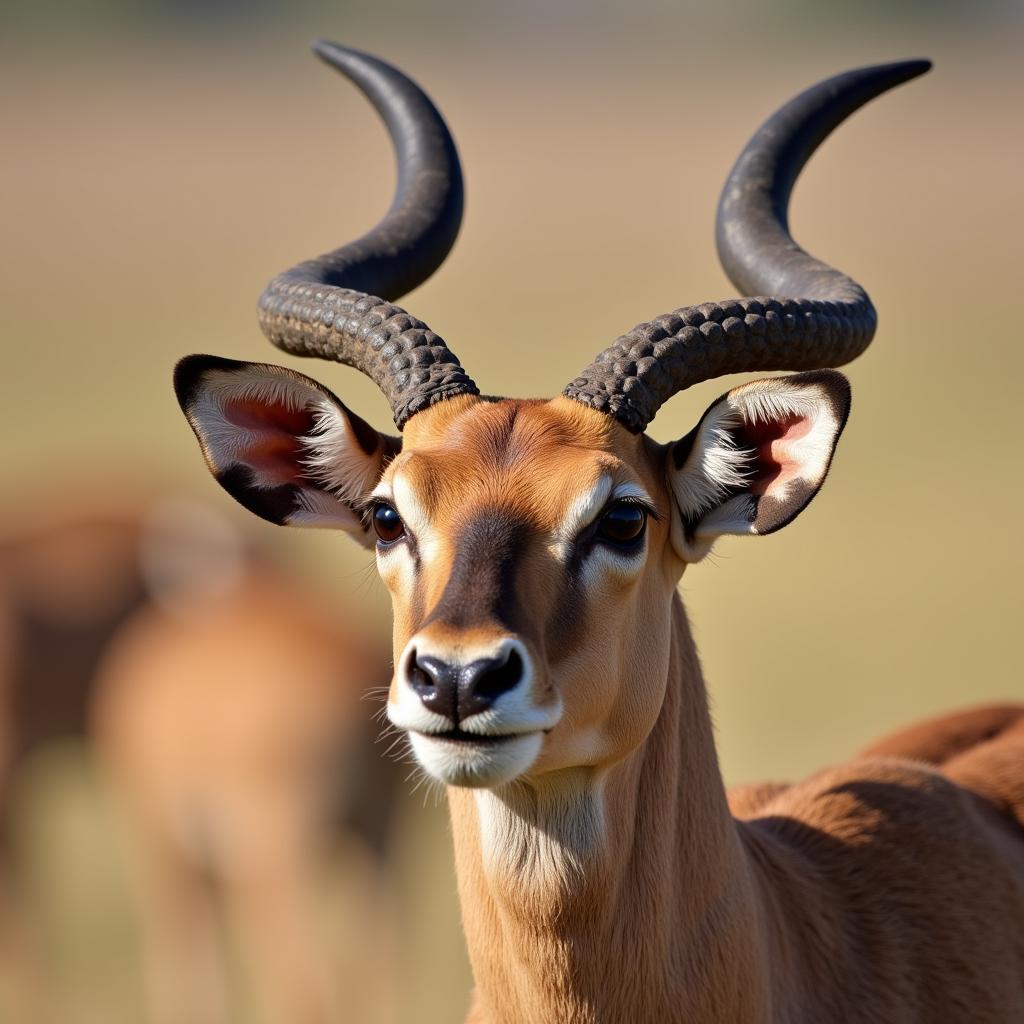Discovering the Wonders of African Grassland Plants
African Grassland Plants are a fascinating and diverse group, adapted to thrive in the unique conditions of the savanna. This vast ecosystem, characterized by open grasslands interspersed with trees and shrubs, supports a remarkable array of plant life that plays a crucial role in the intricate web of life on the African continent. From iconic acacia trees to resilient grasses, these plants have evolved ingenious strategies for survival in a land of both abundance and scarcity. Let’s delve into the captivating world of African grassland plants and uncover their secrets.
The Resilience of African Grassland Flora
The African savanna experiences distinct wet and dry seasons, which significantly impact the plant life. During the dry season, water becomes scarce, and temperatures can soar. Many plants have adapted to these harsh conditions by developing deep root systems to access groundwater, or storing water in their fleshy leaves or stems. Some trees, like the baobab, shed their leaves to conserve water during the dry season, creating a stark yet beautiful landscape. The grasses themselves are incredibly resilient, able to withstand grazing pressure from large herbivores and even fire, which plays a vital role in maintaining the savanna ecosystem.
Did you know that some African grasses can grow several feet tall in just a few months during the rainy season? This rapid growth provides a vital food source for a plethora of animals, from tiny insects to massive elephants.
After this remarkable period of growth, many of these plants produce seeds that can lie dormant in the soil until the next rains arrive, ensuring the continuation of the cycle. This remarkable adaptation is a testament to the resilience of African grassland plants. If you’re interested in learning more about specific grassland shrubs, check out this helpful resource on African grassland shrubs.
Key Plant Species of the African Savanna
The African savanna is home to a diverse array of plant species, each with its own unique characteristics and adaptations. Here are some of the most iconic and important:
-
Acacia Trees: These thorny trees are a quintessential image of the African savanna, providing shade and sustenance for numerous animals. Their thorns offer protection from herbivores, while their leaves and pods provide valuable nutrients.
-
Baobab Trees: These majestic trees are known for their massive trunks, which can store vast amounts of water. They are a vital source of food and water for many animals during the dry season.
-
Elephant Grass: Growing up to 10 feet tall, this grass provides essential grazing for large herbivores like elephants and zebras.
-
Bermuda Grass: This tough, drought-resistant grass forms a dense ground cover, preventing soil erosion and providing grazing for smaller animals.
-
Whistling Thorn: This acacia species is named for the whistling sound created by wind blowing through the swollen thorns, which are often inhabited by ants.
Learning about the African buffalo and bison can provide a deeper understanding of the animals that depend on these plants.
The Role of Fire in the Savanna Ecosystem
Fire is a natural and essential part of the savanna ecosystem. Regular fires, often started by lightning, help to control the growth of woody vegetation, preventing the savanna from becoming a woodland. Many grassland plants are adapted to fire, with some even requiring it for seed germination. Fire also helps to release nutrients back into the soil, promoting new growth and maintaining the biodiversity of the grassland.
What are the Common Adaptations of African Grassland Plants?
Many African grassland plants have developed special adaptations to survive the challenging conditions. Deep root systems allow them to access groundwater during dry periods. Some plants have thick, fleshy leaves or stems that store water. Others have developed thorns or other defenses to protect them from herbivores.
Interested in the diverse birdlife that thrives in these grasslands? Learn more about the African crane bird.
Conclusion
African grassland plants are a testament to the power of adaptation and resilience. From iconic acacia trees to the resilient grasses that carpet the savanna, these plants play a crucial role in supporting the rich biodiversity of the African continent. Understanding their unique adaptations and the intricate relationships they have with the other organisms in this ecosystem is essential for appreciating the wonders of the African savanna. Further exploration of African grass seed can provide even more insights into the remarkable lifecycle of these plants.
FAQ
- What is the most common type of plant in the African savanna? Grass is the dominant vegetation type.
- Why are acacia trees important to the savanna? They provide food and shelter for many animals.
- How do fires benefit the savanna? They help control woody vegetation and release nutrients.
- What is the baobab tree known for? Its massive trunk, which stores water.
- What is an example of a tall grass in the African savanna? Elephant grass.
- Why do some African grassland plants have thorns? To protect themselves from herbivores.
- How have plants adapted to the dry season in the savanna? Deep roots, water storage, and shedding leaves.
Common Situations and Questions
- Planning a safari and want to know what plants you’ll see? This article provides a great overview of the key species.
- Studying ecosystems and need information on savanna plant life? The information here is a good starting point for research.
- Curious about the role of fire in grasslands? This article explains its importance.
Further Exploration
- Explore more about the fascinating wildlife that depends on these plants.
- Learn about the different types of savannas found in Africa.
- Discover the impact of climate change on African grasslands.
When you need support, please contact us via Phone: +255768904061, Email: kaka.mag@gmail.com or visit us at Mbarali DC Mawindi, Kangaga, Tanzania. Our customer service team is available 24/7.


